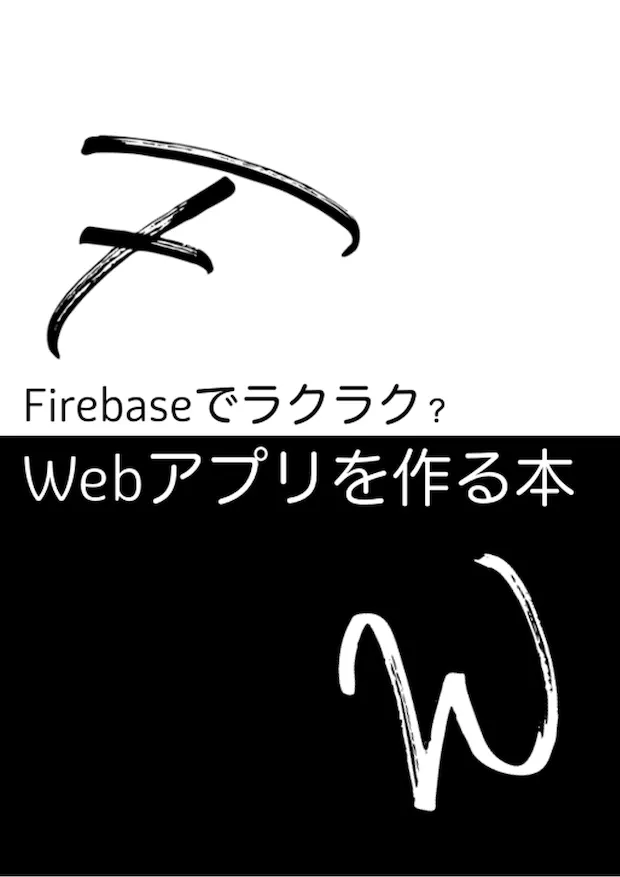
I Released a Technical Book at Winter Comiket (C93)
Table of Contents
- Top
- What I Released
- Comiket Procedures and Schedule
- Application Method
- Application Period
- Circle Cut
- Distribution Information
- Lottery and Other Matters
- Updating Web Catalog Information
- Checking Circle Envelopes
- The Day of the Event
- Notes on the Doujinshi Sale
- Distribution Method
- Printing
- Helpers
- What I Brought
- Conclusion
I released a book at Winter Comiket (C93) in 2017.
I was supposed to write about it beforehand, but I forgot, so this is a participation report.
Since it was my first time releasing a book, and I hadn't participated in Comiket as a general participant before, there were many things I didn't know.
In the end, I discovered many things, so I'll summarize them here.
(Added on 2018-06-24) I'm selling my book online at Booth. If you're interested, please take a look.
What I Released
I released a technical book titled "Firebase Made Easy? A Guide to Creating Web Applications."

Cover
The book covers common pitfalls in web application development, especially for those who want to create web applications using Firebase and React.
At the venue, I displayed sample books and sold paper flyers with a link to the PDF version.
Comiket Procedures and Schedule
Why did I participate in Comiket?
Since I had never participated in a large event like this before, I thought, "Why not try something big?"
When I actually applied, there were several points that confused me.
Application Method
First, during or after Comiket, you need to purchase the Circle Participation Application Set on Circle.ms. This is a must-buy, costing around 1,500-1,600 yen.
For C94, the information is summarized on the following page.
Application Period
For C93, the participation fee had to be paid by August 17th at the latest.
The application itself had to be submitted by August 21st, but in any case, there were about four months until the event, and we had to enter the following information:
- Circle Cut
- Distribution Information (content, planned page count, planned number of copies)
- Past Distribution Information
If you have a solid plan four months in advance, that's great, but if not, you'll have to make some guesses or enter vague information.
It's tough. I wonder how others handle this...
Circle Cut
The Circle Cut requires you to carefully read the application guidelines and create an image in the specified format.
If you're not good at drawing, you can use GIMP to create a simple image.
Keep the created image handy for later steps.
Note that the image will appear smaller on the web catalog, so make sure to use a recognizable size and color for the text.
Distribution Information
The distribution information requires some guessing.
Especially for page count and number of copies, it's difficult to estimate if you're a first-time participant.
This information is used for layout purposes, so even if the actual number of copies differs from the application, it's not a problem.
It's better to err on the side of caution and enter a slightly lower number.
Lottery and Other Matters
Once you register on Circle.ms, you'll receive a notification about the lottery results.
However, if you don't explicitly update your circle information, you won't receive the notification.
I didn't know this and found out about the lottery results by checking the web catalog.
The announcement period was around November 2nd for C93, about two months after the application deadline and two months before the event.
Many people start preparing in earnest after receiving the results.
By the way, the selection rate and criteria are a mystery.
Updating Web Catalog Information
Once you're selected, a Comiket menu appears on Circle.ms.
It's a good idea to update your circle information and distribution information as much as possible beforehand.
This makes it easier for the organizers to check.
Checking Circle Envelopes
After being selected, you'll receive a personal envelope with your address, circle name, and booth location printed on it.
This contains three circle tickets and a participation registration card.
Give two tickets to the people helping you sell, and use one yourself.
Fill out the participation registration card and bring it with you on the day of the event.
The Day of the Event
Enter the venue by 9:00 am, set up your booth, and register.
After that, it's a normal doujinshi sale.
Notes on the Doujinshi Sale
Distribution Method
This time, I prepared a paper flyer with a QR code and a sample book, and placed a donation box.
I did this to "start small." I'll explain the details below.
First, I'll explain why I chose to distribute the book via QR code.
I wanted to avoid the risk of printing a large number of books, which would be expensive and take up a lot of space.
Also, since the book is a technical guide, it's more convenient to read on a mobile device, so I decided to distribute it digitally.
If I can get a sense of the demand, I might try printing the book next time.
I prepared three sample books: one for submission to Comiket, two for display, and two extras just in case.
However, I didn't need the extras.
Finally, I didn't set a price for the book and instead used a donation system.
This was because I couldn't compare prices with other books, and I didn't know how much people would be willing to pay.
I thought it would be better to let the buyers decide the price.
Printing
This time, I printed the book in A4 size, but it was quite large.
Since it's difficult to read in this size, I think it's better to print it in B5 size.
However, if the book is too small, the cover might not stand out.
For promotion, it may help to print a larger title-only sheet to display at the booth.
Helpers
Participating alone is tough, and you can't even take a break to go to the restroom.
You'll need to find someone to help you on the day of the event.
What I Brought
- A small easel to display the book (108 yen at Daiso)
- A plastic box to use as a donation box (108 yen at Daiso, a kitchen item)
It was very simple.
Next time, I'll try to make it more decorative.
When I actually displayed the book on the easel, it was too heavy and kept falling over.
I managed to fix it by using a binder, but it's better to check beforehand.
Also, I'll print the book in B5 size next time.
I carried everything in a backpack, but it would be better to use a suitcase.
The backpack had limited capacity, and the books were prone to bending.
Comiket booths have plenty of space, so it's better to check the space beforehand.
Conclusion
That's what I learned from participating in Comiket.
There were many unexpected challenges.
I didn't write about it, but I had a lot of fun.
There were many participants, and seeing other circles' works was stimulating.
Next, I'd like to participate in other doujinshi sales.
However, I haven't thought of a theme yet.
I hope this article helps anyone who wants to join a doujin event but feels anxious about taking the first step.


